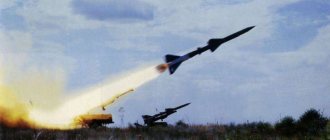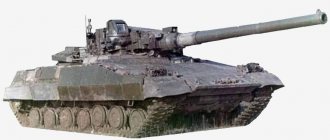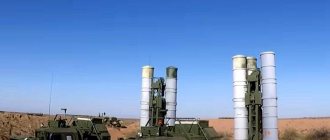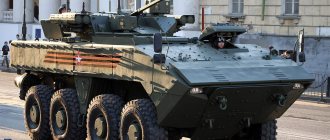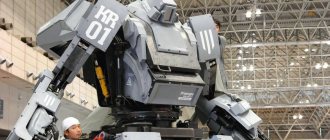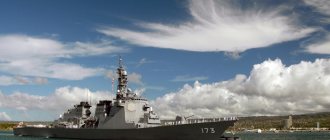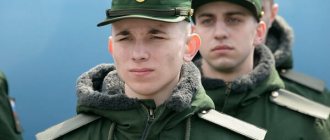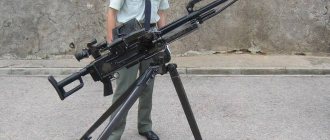TASS DOSSIER. Ten years ago, on August 6, 2007, the first division of the S-400 Triumph anti-aircraft missile system (ZRS) entered combat duty in Russia.
S-400 "Triumph" is a Russian long- and medium-range anti-aircraft missile system (SAM). Designed to destroy air attack and reconnaissance weapons (including aircraft using stealth technology) and any other air targets in conditions of intense fire and electronic countermeasures.
Front
It represents the largest military formation, larger than which can only be such a thing as a “theater of military operations” led by the supreme commander-in-chief.
And the front is commanded by a general or marshal. Outside of war, a formation of this type is called a district. A front of more than 150,000 people usually includes two or more armies, as well as various corps, divisions, regiments and battalions of all possible branches of the military. The front may have a different composition, but it cannot contain units depending on the types of troops. Previously, there were such military formations as “squad” and “team”. The name “team” was used to designate specially formed troops with a strength approximately equal to a company (for example, troops of signalmen or sappers), which are among the general military formations.
The definition of “detachment” was used for medium-sized formations similar to a battalion. Sometimes it can be used in our time to name a group of military units formed for some time (a bypassing detachment or a covering detachment).
In addition to the designations of specific units, you can often find unifying or otherwise grouping formations. Let's look at them in more detail.
Company combat mission
Motorized rifle company
When organizing defense on the ground, a strong point is equipped (up to 1.5 km wide, from the forward position to the rear up to 1 km). The company's strong point is prepared either in the first echelon of the battalion's defense or in the second.
The company can also be located in the reserve of the battalion commander to counter an enemy breakthrough or landing. When units are withdrawing to cover them, the company can operate in a marching outpost (rear, head or side).
In the expected directions of enemy attack, the company is assigned artillery and anti-tank units from the battalion and a tank platoon. The company's positions are equipped in engineering terms (obstacles, minefields, fire installations, rubble, reserve firing positions) and a fire system along the lines is prepared.
When organizing an offensive, the company is given the task of capturing the enemy's forward position. Personnel, with the support of combat vehicles, advance along a front of up to 500 m. At the same time, the command must ensure the secrecy of advance and deployment, surprise and use of the terrain to quickly approach the enemy, bypass and cover enemy positions for the speedy defeat and completion of the assigned task.
Of decisive importance for victory is deep, comprehensive reconnaissance of the enemy’s location, competent organization of fire suppression before the offensive, and concentration of efforts on the site of a successful attack.
Tank company
In defense, it occupies a stronghold, while tankers are necessarily assigned motorized rifles to counter enemy infantry and anti-tank weapons. Mortar units are allocated. Be sure to dig caponiers (main and spare), set up ambushes and camouflage positions.
tank company before the march
The offensive is supported by motorized rifle and grenade launcher units. The experience of combat operations in local conflicts indicates the need to cover tanks with infantry and escort combat vehicles, interaction with artillerymen and attack aircraft.
A tank company assigned to reinforce a motorized rifle battalion can form a reserve and be used in places where the enemy has broken through to organize counterattacks; take prepared positions in a fire ambush. By decision of the command, mixed tactical groups of tanks and motorized infantry can be formed to solve special problems.
What's included
In terms of structure and equipment, the S-400 is virtually no different from its predecessor. The air defense system includes a multifunctional radar, a missile launcher, as well as fully autonomous guidance and target designation systems. As for the differences, the new model provides tracking of a much larger number of targets, and the probability of their simultaneous destruction is higher.
- Battle control command post 55K6E.
- To quickly detect and engage the enemy, the 91N6E radar is used.
The 98Zh6E anti-aircraft complex itself also includes additional components:
- Radar for control and tracking of air targets 92N2E.
- For direct launch of missiles, launchers 5P85TE2 or 5P85SE2 are used.
- The list of missiles with which this complex is compatible is impressive. 48H6E, 48H6E2, 48H6E3 can be launched. This air defense system also allows launches of the 40N6E missile to engage ultra-long-range targets.
If the current tactical situation requires it, the fire crew may additionally be provided with the following optional means:
- The 96L6E radar is specially designed for tracking targets at the maximum accessible altitude.
- Tower 40V6M, created to improve the signal on the 92N6E antenna.
System composition
The Triumph air defense system consists of a combat control point and a detection radar station, with which up to 6 anti-aircraft missile systems (SAM) are associated. Each air defense system contains a multifunctional control radar and up to 12 launchers with missiles of different types. Also, the system may optionally include an all-altitude radar and a mobile tower for an antenna post.
All means of the system are placed on off-road wheeled chassis (manufactured by the Minsk Wheel Tractor Plant and the Bryansk Automobile Plant) and can be transported by rail, as well as by water and air.
Frame
Just as a brigade is an intermediate formation between a regiment and a division, so a corps is an intermediate formation between a division and an army. The corps is already a combined arms formation, that is, it usually lacks the characteristic of one type of force, although there may also be tank or artillery corps, that is, corps with a complete predominance of tank or artillery divisions. The combined arms corps is usually referred to as the "army corps". There is no single structure of buildings. Each time a corps is formed based on a specific military or military-political situation and may consist of two or three divisions and a varying number of formations of other branches of the military. Usually a corps is created where it is not practical to create an army. In peacetime, there were literally three to five corps in the Soviet Army. During the Great Patriotic War, corps were usually created either for an offensive in a secondary direction, an offensive in a zone where it was impossible to deploy an army, or, conversely, for concentrating forces in the main direction (tank corps). Very often then the corps existed for a few weeks or months and was disbanded upon completion of the task. It is impossible to talk about the structure and strength of the corps, because as many corps exist or existed, so many of their structures existed. Corps commander, Lieutenant General.
Four regiments per year
According to official data, since the S-400 was put into service in 2007, the Ministry of Defense has already received 63 divisions of these complexes. They staff 26 air defense regiments and two training centers. The industry has reached the level of stable production of four Triumph regiments for the Russian army annually.
In addition to the air defense forces of the Aerospace Forces, they are also equipped with coastal units of the fleet. Today, S-400s are deployed not only around Moscow and St. Petersburg. They cover objects throughout the country: from the south to the far north. In particular, one of the regiments will be deployed on the Arctic island of the Novaya Zemlya archipelago. Triumphs also protect Crimea, the Russian Khmeimim airbase in Syria, the Far East and Kamchatka.
s2
A serviceman of the combat crews of the S-400 air defense system during duty in Crimea, November 2022
Photo: TASS/Sergey Malgavko
In 2022, the media reported the completion of tests for the S-400 ultra-long-range anti-aircraft guided missile. Before this, the newest complex used the same 48N6 with a range of up to 250 km as modern modifications of the S-300. With modern ammunition, the maximum reach of the complex will increase to 400 km. At this range, it will be able to engage large, low-maneuver targets such as early warning and electronic warfare aircraft and heavy bombers.
In addition to air targets, the S-400 is capable of successfully intercepting ballistic missiles. At a range of up to 60 km, it can repel the impact of such ammunition flying at speeds of up to 4.8 km/sec.
In the Russian army, to cover long-range S-400s, their divisions include batteries of short-range Pantsir-S missile and gun systems. They protect them from small targets, for which there is no point in spending powerful and expensive Triumph missiles. They can also help in repelling massive attacks from guided weapons and cruise missiles. Previously, the Ministry of Defense reported that air defense units of the Central Military District would be equipped according to the same scheme.
The high combat qualities of the S-400 Triumph are confirmed by the demand for it. It was purchased not only by traditional buyers of Russian weapons, such as China or India. They were also chosen for air defense by Turkey, a NATO member country. In order to equip their troops with the most modern air defense systems, foreign states are willing to risk sanctions from the United States, which is extremely dissatisfied with these contracts.
c1
View of a Turkish military base where radar stations of Russian S-400 air defense systems are being tested, November 2022
Photo: TASS/EPA/STR
In June, the press service of the Almaz-Antey concern reported that supplies of complexes to the Ministry of Defense would continue. An additional agreement was concluded on the construction of three more S-400 regiments for Russian troops. By the end of 2023, the defense department will also receive four regiments of S-350 medium-range systems.
Specifications
— Range of destruction of aerodynamic targets — from 3 to 250 km;
— The range of destruction of tactical ballistic targets is from 5 to 60 km;
— Target engagement altitude — from 2 to 27 km;
— Speed of targets hit — up to 4 thousand 800 m/sec;
— The number of simultaneously fired targets is up to 36 (up to 6 with one air defense system);
— The number of simultaneously guided missiles is 72. The system can selectively operate using at least 5 types of missiles of different launch weights and launch ranges — thus creating a layered defense;
— The time to deploy the system from the traveling state is 5-10 minutes, the time to bring it to combat readiness from the deployed state is 3 minutes;
— The operational life of ground systems is at least 20 years, and that of anti-aircraft guided missiles is at least 15 years.
On April 8, 2022, the deputy commander-in-chief of the Aerospace Forces (VKS) of Russia, Lieutenant General Viktor Gumenny, told reporters that missiles for the S-400, capable of “destroying targets in near space, at long ranges and high speeds,” began to enter service in the Russian Federation. .
Battalion composition
Typically, two to four battalions form a regiment. We will now consider the number of servicemen in the battalion.
The battalion is considered the main tactical unit of ground forces. The range of personnel in this unit generally ranges from 400 to 800 people. It includes several platoons, as well as individual companies.
If we consider artillery, then the combat unit that corresponds to a battalion is called a division.
As a rule, a battalion is commanded by a soldier with the rank of major. Although, of course, there are exceptions. They can be found especially often during combat operations, when an acute shortage of personnel officers may arise in the armed forces of a country or a separate unit.
Let's look at the structure of a battalion using an example. As a rule, the backbone of this structural unit is three motorized rifle companies. In addition, the battalion includes a mortar battery, a grenade launcher platoon, an anti-tank platoon, and a control platoon. Additional, but no less important units are material and technical support platoons, as well as a medical center.
Eurofighter - supersonic millions
Former German Chancellor Gerhard Schröder in the cockpit of a Eurofighter. There is nothing to be proud of - this is the most protracted and expensive arms procurement project. One car crashed and the controls failed. Then we had to fine-tune the ejection seats. The cost increased from 50 to 90 million euros - for each aircraft.
How the German Ministry of Defense bought armor, but received tin
What other similar tactical terms exist?
Subdivision. This word refers to all military formations that are part of the unit. Squad, platoon, company, battalion - they are all united by one word “unit”. The word comes from the concept of division, to divide. That is, the part is divided into divisions.
Part. This is the main unit of the Armed Forces. The term “unit” most often means regiment and brigade. The external features of the unit are: the presence of its own office work, military economy, bank account, postal and telegraph address, its own official seal, the commander’s right to give written orders, open (44 tank training division) and closed (military unit 08728) combined arms numbers. That is, the part has sufficient autonomy.
Compound. As a standard, only a division fits this term. The word “connection” itself means to connect parts. The division headquarters has the status of a unit. Other units (regiments) are subordinate to this unit (headquarters). All together there is a division. However, in some cases, a brigade may also have the status of a connection. This happens if the brigade includes separate battalions and companies, each of which has the status of a unit in itself.
An association. This term combines corps, army, army group and front (district). The headquarters of the association is also the part to which various formations and units are subordinated.
History of the creation of the S-400 air defense system
The S-400 air defense system was fully developed by NPO Almaz OJSC. This complex is designed for use in a variety of conditions: at night or during the day, in electronic warfare and in various climatic zones. First of all, it is aimed at combating enemy missiles and aircraft of various classes. The air defense system is capable of destroying fast-flying targets at a distance of 400 km.
At the end of the 80s. There was an urgent need for a complex that could hit fast-flying targets up to 400 km. Initially, it was planned to upgrade outdated S-200 installations for such purposes, but after a while they decided to create a new system. The S-300P complex was used as a basis. At the request of military customers, the characteristics of the S-400 were refined during intermediate tests.
The main difference between the S-300 and S-400 is their larger coverage area and the ability to use missiles, both those already in service and future variants capable of shooting down air command posts, strategic aircraft and electronic warfare aircraft at a distance of 400 km.
In terms of characteristics, the missiles used by the S-400 demonstrate more than double efficiency compared to their foreign counterparts - Patriot and Aster.
Most of the tests of new missiles for the promising complex were carried out on the territory of the Kapustin Yar test site. The main tests took place in 2001, and five years later they carried out successful tests of a missile capable of hitting and destroying the warhead of a ballistic target.
The first live firing of the S-400 was tested at the same training ground in 2008. The target moved at a speed of 2.8 km per second, but the complex was able to successfully intercept and destroy it. Upon completion of the tests, the S-400 was accepted into air defense service.
In 2007, Triumph went on combat duty. The location of the first complex is Elektrostal, located near Moscow. Since that time, air defense forces have been expanding annually by one or two regiments equipped with this air defense system. In addition, “Triumph” is located in the Murmansk region.
Their long range makes it possible to control aircraft of the Norwegian Air Force. Some of the manufactured S-400s are sent for export.
Anti-aircraft missile system S-400 "Triumph" in detail
The S-400 Triumph anti-aircraft missile system was adopted for service on April 28, 2007 by Decree of the Government of the Russian Federation. In 2007, the Red Banner Guards Anti-Aircraft Missile Regiment was the first in the Air Force of the Armed Forces of the Russian Federation to be rearmed with this air defense system. The appropriate material and technical base has been created and the personnel of this regiment have been trained. On August 6, 2007, the first division and command post of the S-400 air defense system took up combat duty in the Moscow region. According to the combat training plan, the regiment's personnel annually perform live firing at one of the Air Force training grounds.
It must be emphasized that Russian mobile air defense systems have higher performance characteristics compared to similar foreign systems, including American ones, for combating attack missiles and can be quickly deployed as part of the non-strategic missile defense system of the European Commonwealth.
At present and in the near future, the basis of the system of fire destruction of missile attack weapons in flight can be made up of Air Force anti-aircraft missile systems such as S-300 and S-400. They are designed for air defense of military groups and critical facilities from attacks by cruise, aeroballistic and ballistic missiles for tactical and operational-tactical purposes, as well as from army, tactical and strategic aircraft. They provide effective repelling of massive raids by modern air attack weapons in conditions of intense electronic suppression and are capable of performing combat missions in any weather conditions, day or night.
The S-400 system is superior to the American Patriot in many respects. In modern combat, the emphasis in overcoming air defense is often placed at low altitudes. Thanks to the vertical launch of missiles, the S-400 can fire at targets flying from any direction without turning the launchers. The Patriot complex, due to its inclined launch during a maneuverable battle, is forced to deploy launchers or place them in advance in missile-hazardous directions, which invariably leads to a decrease in fire capabilities. An important factor is the time it takes to transfer the complex from a traveling to a combat position. If the Russian complex is put into combat position in less than 5 minutes, then the Americans need 30 minutes for this.
Brief description of the main design features of the S-400 air defense system
The Triumph system is designed for highly effective protection of the most important political, administrative, economic and military facilities from air strikes, strategic cruise, tactical and operational-tactical ballistic missiles, as well as medium-range ballistic missiles in conditions of combat and electronic countermeasures.
The system provides: • destruction of air targets at ranges up to 250 km; • defeating non-strategic ballistic missiles at ranges up to 60 km; • high probability of hitting all types of targets due to effective algorithms for guiding missiles and combat equipment for 48N6EZ and 48N6E2 missiles; • high noise immunity; • autonomous solution of combat missions; • possibility of integration into air defense groups.
The air defense system includes the following elements:
Control facilities 30K6E: • combat control point 55K6E; • 91N6E detection radar.
Up to six 98Zh6E anti-aircraft missile systems, each consisting of: • 92N6E multifunctional radar; • up to 12 5P85TE2 and/or 5P85SE2 launchers with four missiles in transport and launch containers on each launcher.
Optional equipment included: • 96L6E all-altitude radar • 40V6M mobile tower for antenna post from 92N6E.
MAIN CHARACTERISTICS OF THE S-400 "TRIUMPH" ADMS
Number of simultaneously tracked target tracks up to 300
Radar radar viewing area (azimuth x elevation angle), degrees: – aerodynamic targets 360×14 – ballistic targets 60 x 75
Damage zone by range, km: – aerodynamic targets 3...250 – ballistic targets 5...60
Minimum / maximum height of the target hit, km – aerodynamic 0.01 / 27 – ballistic 2 / 27
Maximum speed of the target hit, m/s 4800 Number of simultaneously fired targets 36 Number of simultaneously guided missiles 72 Deployment time of the system from the march, min 5
Design Features
The S-400 air defense system, the characteristics of which differ significantly from the S-300, is designed using the most advanced and promising developments. Most of the processes occur automatically, without human intervention.
For these purposes, the Triumph control center contains high-performance computers. Of course, if necessary, operators from among the division’s personnel take control.
The S-400 Triumph air defense system is highly mobile and mounted on a wheeled chassis.
Able to overcome difficult sections of rough terrain. The dimensions of all elements of the complex allow it to be easily transported by air and sea.
There are two types of chassis for air defense systems: light and heavy. Their main difference is the number of missile launch silos.
S 400 - missile system
The computers of the Triumph air defense system are highly optimized and are capable of simultaneously tracking multiple targets located at different altitudes and distances from the launchers. In this case, the sent missile can be released by the complex until it approaches the striking distance.
Missile warheads contain elements that hit the target with a large number of small elements, leaving the target without even a hint of the possibility of escaping undamaged.
Another key feature is the cold start.
This implies the release of a rocket from the silo without turning on the main engine. First, the Triumph rocket is thrown to a height of 30 meters and only then the thrust is started and the missile launches towards the target. At the same time, inertial control is started.
This method of launching a missile is one of the key features of the S-400 Triumph anti-aircraft missile system. Western analogues fly out of the launcher immediately with the engine turned on. Therefore, Patriot systems often look like they were set on fire.
On combat duty in Russia
According to data from open sources, by April 2022, 19 S-400 regiments were on combat duty in the Russian Armed Forces. This is a total of 38 divisions and 304 launchers in Elektrostal, Dmitrov, Zvenigorod, Kurilov (Moscow region), Nakhodka (Primorsky Territory), Kaliningrad, Novorossiysk (Krasnodar Territory), Polyarny (Murmansk region), Petropavlovsk-Kamchatsky (Kamchatsky region), Novosibirsk, Vladivostok, Sevastopol, etc.
The state armament program provides for the receipt of 56 S-400 divisions by 2020, which will allow the re-equipment of 28 two-divisional anti-aircraft missile regiments.
On November 25, 2015, the S-400 Triumph system was transferred from the Moscow region to the Khmeimim airbase in Syria, where the Russian aviation group is located.
Subdivision
This is the general name of any formations within a unit: this includes battalions, platoons, companies, squads, etc.
Part
The name is often used to designate a regiment or brigade; its distinctive characteristics include the presence of:
- Autonomous office work;
- Military economic unit;
- Bank account;
- Postal address and official seal;
- The commander has the right to give written orders;
- Open and closed combined arms numbers.
Thus, the part has a high level of autonomy.
In addition to the regiment and brigade, formations belonging to subunits can have the status of a unit - they can be part of a division and army on the same principle as a regiment or brigade, and also directly subordinate to the supreme commander-in-chief. The distinguishing feature of such parts will be the word “separate”. The meaning of the terms “military unit” and “military unit” is not equivalent. “Military unit” is a general name without specifics. If we are talking about a specific military formation, then the term “military unit” is used.
Compound
It consists of several parts that are connected into one, i.e. More often than not, a division meets these parameters. The connection has the status of a prefabricated part, subordinate to which are other parts.
The division headquarters may include both battalions and companies belonging to subunits and those belonging to the unit.
An association
Definition referring to a corps of an army, army groups and fronts united together. It is a part that subordinates various connections and parts.
Number of military units in the Russian Federation
In the Soviet and Russian armies, a squad is the smallest military formation with a full-time commander. The squad is commanded by a junior sergeant or sergeant.
Usually there are 9-13 people in a motorized rifle squad. In departments of other branches of the military, the number of personnel in the department ranges from 3 to 15 people. In some branches of the military the branch is called differently.
In artillery there is a crew, in tank forces there is a crew.
Platoon
Several squads make up a platoon. Usually there are from 2 to 4 squads in a platoon, but more are possible. The platoon is headed by a commander with the rank of officer. In the Soviet and Russian armies this is ml.
lieutenant, lieutenant or senior. lieutenant. On average, the number of platoon personnel ranges from 9 to 45 people. Usually in all branches of the military the name is the same - platoon.
Usually a platoon is part of a company, but can exist independently.
Company
Several platoons make up a company. In addition, a company may also include several independent squads not included in any of the platoons. For example, a motorized rifle company has three motorized rifle platoons, a machine gun squad, and an anti-tank squad.
Typically a company consists of 2-4 platoons, sometimes more platoons. A company is the smallest formation of tactical importance, that is, a formation capable of independently performing small tactical tasks on the battlefield. Company commander captain.
On average, the size of a company can be from 18 to 200 people. Motorized rifle companies usually have about 130-150 people, tank companies 30-35 people. Usually a company is part of a battalion, but it is not uncommon for companies to exist as independent formations.
In artillery, a formation of this type is called a battery; in cavalry, a squadron.
Battalion
Consists of several companies (usually 2-4) and several platoons that are not part of any of the companies. The battalion is one of the main tactical formations. A battalion, like a company, platoon, or squad, is named after its branch of service (tank, motorized rifle, engineer, communications). But the battalion already includes formations of other types of weapons.
For example, in a motorized rifle battalion, in addition to motorized rifle companies, there is a mortar battery, a logistics platoon, and a communications platoon. Battalion commander Lieutenant Colonel. The battalion already has its own headquarters. Usually, on average, a battalion, depending on the type of troops, can number from 250 to 950 people. However, there are battalions of about 100 people.
In artillery, this type of formation is called a division.
Regiment
In the Soviet and Russian armies, this is the main tactical formation and a completely autonomous formation in the economic sense. The regiment is commanded by a colonel. Although regiments are named according to the branches of the military, in fact this is a formation consisting of units of many branches of the military, and the name is given according to the predominant branch of the military. The number of personnel in the regiment ranges from 900 to 2000 people.
Brigade
Just like a regiment, it is the main tactical formation. Actually, the brigade occupies an intermediate position between a regiment and a division. A brigade can also consist of two regiments, plus battalions and auxiliary companies. On average, the brigade has from 2 to 8 thousand people. The brigade commander, as well as the regiment, is a colonel.
Division
The main operational-tactical formation. Just like a regiment, it is named after the predominant branch of troops in it. However, the predominance of one or another type of troops is much less than in the regiment. On average, there are 12-24 thousand people in a division. Division commander, Major General.
Frame
Just as a brigade is an intermediate formation between a regiment and a division, so a corps is an intermediate formation between a division and an army. The corps is already a combined arms formation, i.e.
usually it lacks the characteristic of one type of military force. It is impossible to talk about the structure and strength of the corps, because as many corps exist or existed, so many of their structures existed.
Corps commander, Lieutenant General.
Overall material rating: 5
Rating of unregistered users today:
Battalion and number of military personnel in it
As in other military units, the size of the battalion depends on the type of troops. The battalion consists of 2 - 4 companies, and has from 250 to 1000 people. As you can see, this military unit already has quite an impressive number, and therefore is considered the main tactical formation, capable of acting independently.
Many have heard the song of the group “Lube” called “Combat”, but not everyone knows what it means. So, the battalion is commanded by the battalion commander, which is abbreviated as “battalion commander”, in whose honor this composition of the same name was written. A battalion commander is the position of a lieutenant colonel, but most often battalion commanders are captains and majors, who have the opportunity to advance in their rank and receive the stars of a lieutenant colonel.
The battalion's activities are coordinated at battalion headquarters. Just like a company, a battalion, depending on the type of troops, may be called differently. For example, in the artillery and anti-aircraft missile forces they are called divisions (artillery division, air defense division).
There are many more specific units in battalions and divisions that were mentioned above. Therefore, we will present the structure in the form of separate infographics
Structure of a motorized rifle battalion Structure of a tank battalion
Waiting for Prometheus
Unlike the S-300 family, the two main branches of which - S-300P and S-300V - have a clear distinction in terms of specialization (the first is intended mainly to combat aircraft and cruise missiles, the second - to intercept operational-tactical missiles), the S The -500 is initially being developed to combat all types of air attack weapons, including hypersonic aircraft and warheads of intercontinental ballistic missiles. The main “anti-aircraft” missile of the S-500 should be the “ultra-long-range” 40N6 with a flight range of 400 km, which also serves as the “top” ammunition in the S-400 arsenal. To intercept ballistic targets and hypersonic vehicles, the 77N6 family of missiles is being developed, the roots of which go back to the 9M82 - the “large” missiles of the S-300V air defense system. It is believed that the maximum firing range will be up to 600 km, and its altitude reach will allow it to shoot down targets, including in near space - which does not exclude the use of the S-500 to combat low-orbit satellites, which are actively used, for example, for reconnaissance.
Photo: commons.wikimedia.org/Vitaly V. Kuzmin
Launcher of the S-300V anti-aircraft missile system
Manturov spoke about the imminent launch of mass production of the S-500 complex
The design of the S-500 began at the turn of the 1990s and 2000s, and in the early 2010s the production of individual experimental components of the system began. As part of the State Program for 2011–2020, it was assumed that deliveries of the S-500 to the troops would begin in 2017 and in total the military would receive 10 divisions of this system.
Later, the deadlines were shifted slightly to the right, and it is now assumed that the parent division will be ready before the beginning of 2020. Serial deliveries will most likely begin in 2021.
The characteristics of the S-500 make it possible to use it for the country’s missile defense missions, but the creation of a national missile defense system as such is not included in the goals of the Russian leadership. According to experts, we are talking primarily about the creation of separate protected zones that provide cover for particularly important facilities, which, in addition to the capital, include a number of other major cities - industrial and transport centers, as well as position areas of strategic nuclear forces.
Air defense_2
Launch container of the 9M82 rocket on display at the MAKS air show in Zhukovsky
Photo: commons.wikimedia.org/Vitaly V. Kuzmin
In this regard, we can assume that purchases of the S-500 are unlikely to be too large-scale: most likely, we will be talking about 20-30 divisions of this system, which will crown the battle formations of air defense and missile defense systems in protected areas.
"We shoot down everything that moves"
Designer Viktor Yeletsky talks about a new Russian development that is 100% capable of defeating glide bombs, cruise missiles and drones
STRUCTURE OF A MOTORIZED COMPANY BY STATE IN THE 1960s – 1970s.
Structure and armament of a motorized rifle company on an armored personnel carrier
Further rearmament and motorization led to the emergence of a motorized rifle company in 1962, in which the number of squads was reduced by armored personnel carrier crews. The vehicle was an armored personnel carrier BTR-60PB, armed with a 14.5-mm KPV machine gun.
The grenade launcher and machine gun were replaced by next-generation models that were equivalent in purpose (but not in properties). One of the machine gunners served as an assistant machine gunner, but was not the number two on staff. A sniper appeared in the squad as an assistant commander, acting on his instructions.
Advantages over existing samples
The S-400 air defense system was developed on the basis of the S-300, but has much better characteristics in all areas. The new complex is not only cheaper, but also 2.5 times more efficient.
The uniqueness of Triumph is that the complex can work not only with new missiles that were specially developed for it, but also with old models that were produced for the S-300 and the like. Even in the basic version, the complex is equipped with four missile options at once. If deployed, it allows you to quickly organize several echelons of air defense and organize an attack on enemy air reconnaissance bases.
Export supplies
Currently, the S-400 is in service only with the Russian Armed Forces. Representatives of the Russian Ministry of Defense stated that deliveries of Triumphs to Belarus and Kazakhstan could begin “after 2015”; the facts of such deliveries were not officially reported.
On November 25, 2015, Vladimir Kozhin, Assistant to the President of the Russian Federation for Military-Technical Cooperation, told media representatives that negotiations were underway on the supply of the S-400 to the PRC. In March 2016, the general director of the Rostec state corporation, Sergei Chemezov, announced that China had made an advance payment for the supply of air defense systems. On April 26, 2017, the press service of the Federal Service for Military-Technical Cooperation of Russia (FSMTC) confirmed the start of the contract.
On October 15, 2016, the Russian Federation and India signed an agreement on the supply of S-400 Triumph to this country.
In November 2016, it became known about negotiations between Turkey and the Russian Federation on the purchase of the S-400. In March 2022, Chemezov reported that the Turkish side expressed a desire to receive a loan from Russia for the purchase of weapons, including the S-400. Russian President Vladimir Putin announced the Russian Federation’s readiness to supply Turkey with S-400 air defense systems on June 1, 2022.
